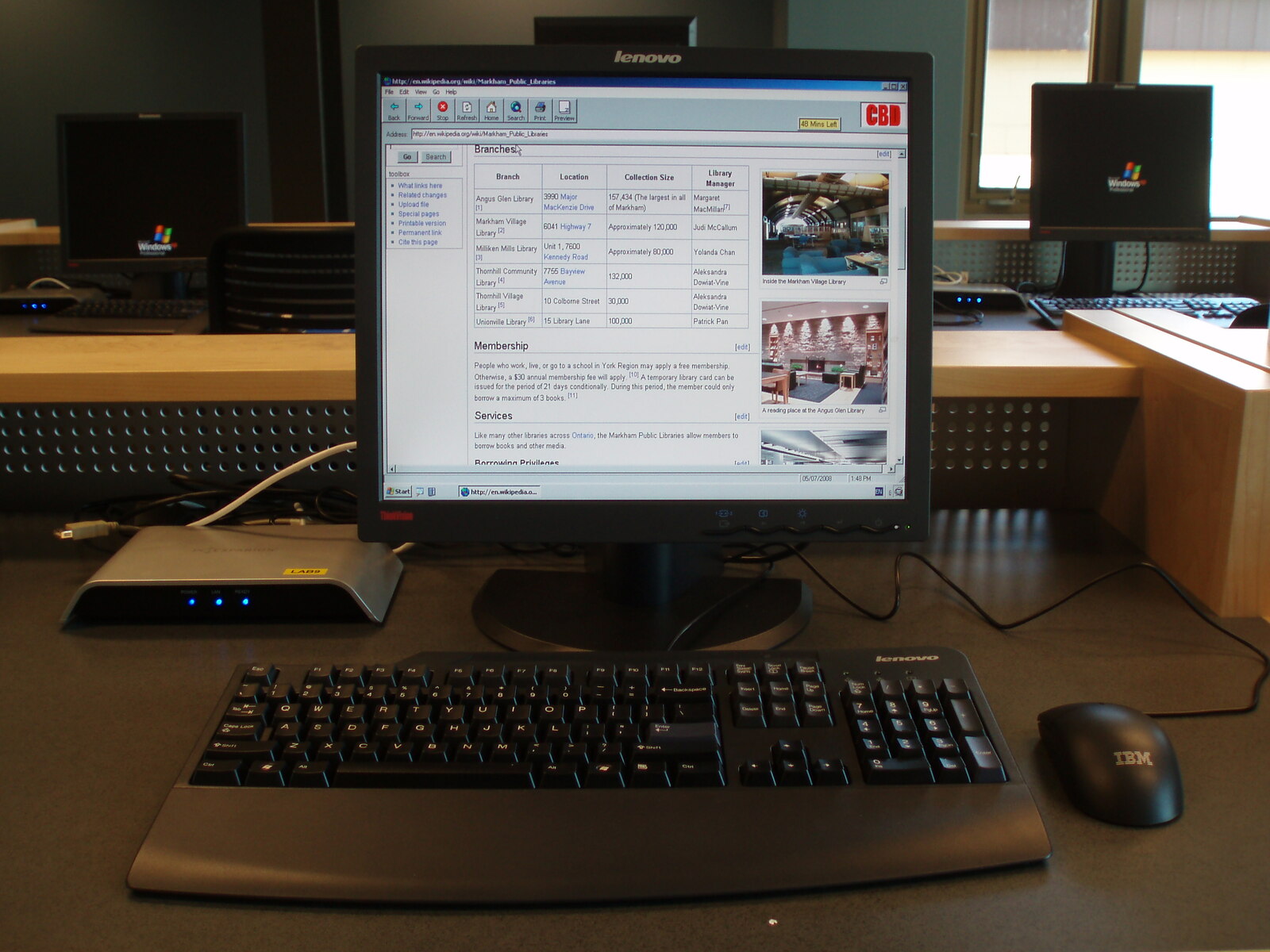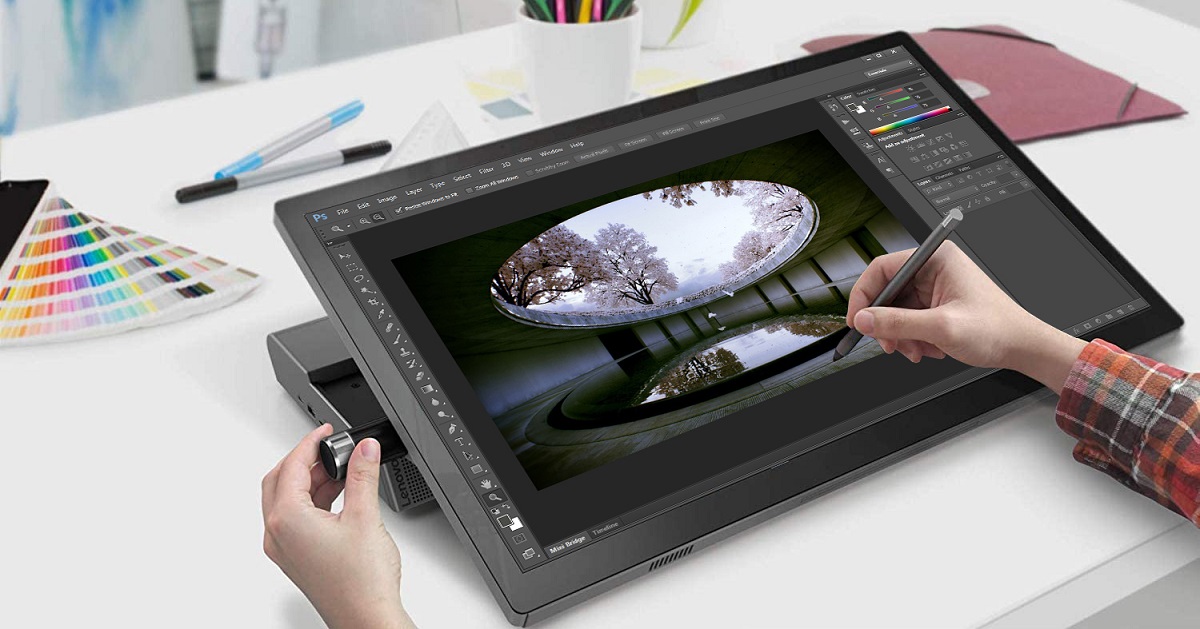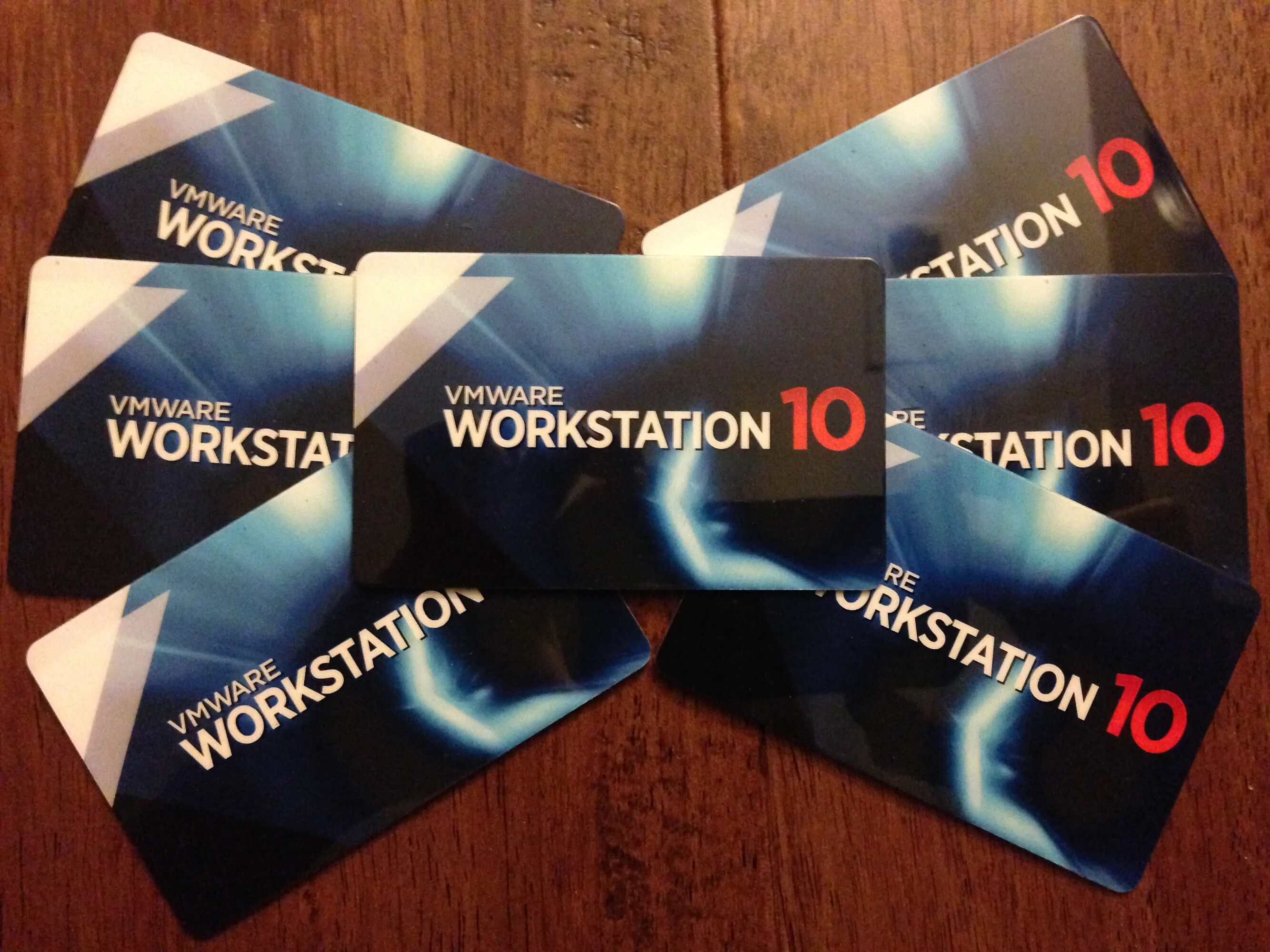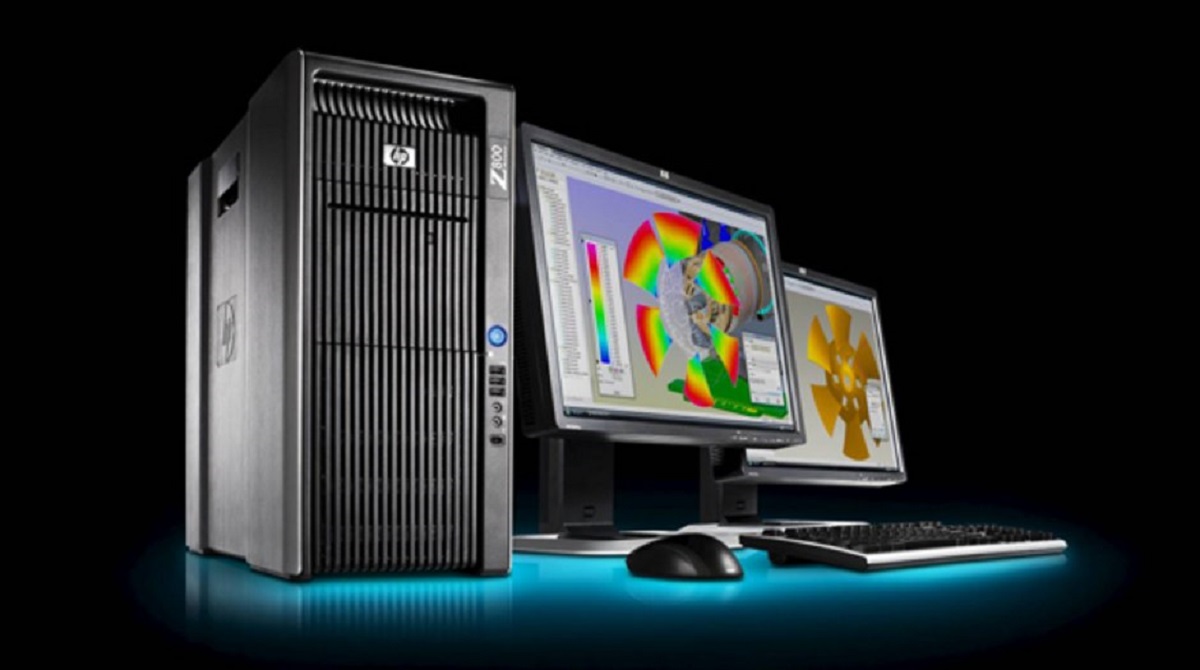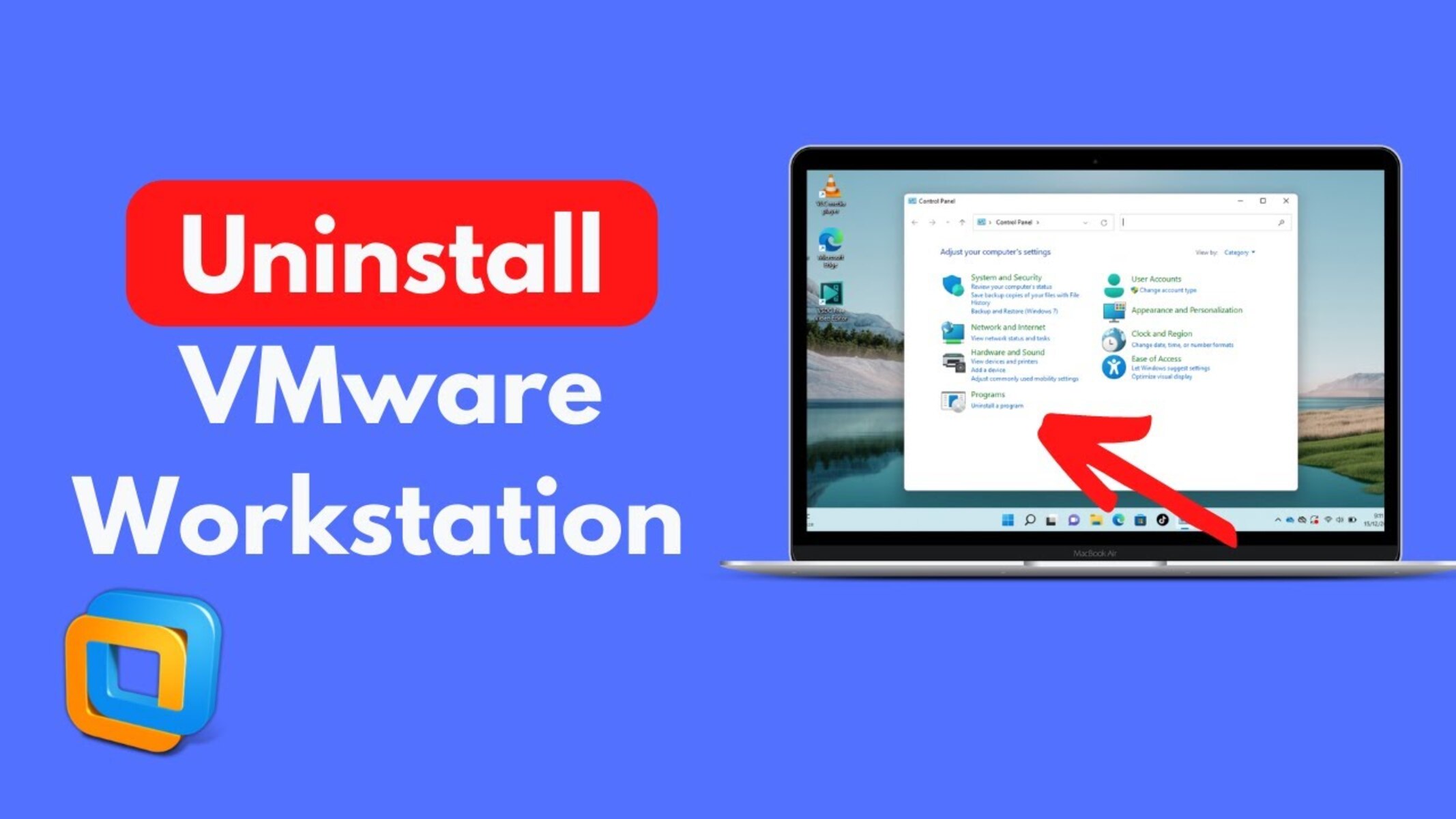Introduction
A workstation is a specialized type of computer system that is designed to handle complex tasks and demanding workloads typically found in professional settings such as engineering, design, animation, video editing, and scientific research. Unlike regular desktop computers, workstations are built with high-performance components and advanced capabilities to deliver superior processing power, graphics rendering, and data storage.
With the rapid advancements in technology, workstations have become an integral part of various industries, enabling professionals to efficiently tackle complex projects and push the boundaries of their creativity. Whether it’s designing intricate 3D models, running simulations, or processing large amounts of data, a workstation provides the necessary computing resources to handle these tasks with ease.
Workstations are designed to be reliable, durable, and customizable to meet the unique requirements of different professionals. They are equipped with powerful processors, ample memory, advanced graphics cards, and spacious storage options. Additionally, they offer extensive connectivity options and support for specialized software applications.
In this article, we will delve into the world of workstations, exploring their components, advantages, and key differences from regular desktop computers. Whether you’re a professional looking to upgrade your equipment or someone curious about the capabilities of workstations, this article will provide you with a comprehensive overview.
Definition of a Workstation
A workstation is a specialized computer system that is designed to handle intensive and resource-demanding tasks in professional settings. It offers significantly higher performance and advanced capabilities compared to regular desktop computers. Workstations are commonly used by professionals in fields such as engineering, architecture, graphic design, animation, scientific research, and video editing, where their computational requirements exceed the capabilities of standard PCs.
One distinguishing characteristic of a workstation is its robust and reliable design. Workstations are built with high-quality components that undergo rigorous testing to ensure stability and durability, even under heavy workloads. They are engineered to handle complex tasks without compromising on performance, making them ideal for professionals who require uncompromising reliability.
Another defining feature of workstations is their scalability and customization options. Unlike off-the-shelf consumer desktops, workstations can be tailored to specific needs. Professionals can choose from a range of components, including processors, memory, storage, and graphics cards, to create a workstation that meets their exact requirements. This flexibility allows users to optimize their system for their specific workloads, resulting in improved productivity and efficiency.
Furthermore, workstations offer superior processing power compared to regular desktop computers. They are equipped with high-performance processors, such as Intel Xeon or AMD Ryzen Threadripper, which have multiple cores and threads for multitasking and handling demanding applications. Combined with generous amounts of RAM, workstations can efficiently handle complex simulations, data analysis, and rendering tasks.
Graphics performance is also a key consideration for workstations. They are equipped with powerful graphics cards, such as NVIDIA Quadro or AMD Radeon Pro, which provide accelerated rendering and support for high-end graphic applications. This enables professionals in industries like 3D modeling, animation, and video editing to work with intricate designs and high-resolution content.
In summary, a workstation is a specialized computer system that offers high-performance processing, advanced graphics capabilities, and superior reliability. It is designed to meet the demanding requirements of professionals in various industries and can be customized to match specific needs. With their robust construction and powerful components, workstations enable professionals to tackle complex tasks efficiently and push the boundaries of their work.
Components of a Workstation
A workstation is composed of several key components that work together to deliver the performance and functionality required for professional tasks. These components include the processor and memory, graphics card and display, storage, connectivity options, operating system, and specialized software applications.
The processor and memory are the heart and brain of a workstation. Workstations are typically equipped with high-performance processors, such as Intel Xeon or AMD Ryzen Threadripper. These processors have multiple cores and threads, allowing for multitasking and handling resource-intensive applications with ease. Combined with ample memory, which is essential for quickly accessing and manipulating large data sets, workstations can deliver swift and efficient performance, particularly in tasks that require heavy computational power, such as rendering or simulation.
The graphics card and display are crucial components for professionals working with graphic-intensive applications. Workstations often feature powerful graphics cards, such as NVIDIA Quadro or AMD Radeon Pro, which are optimized for complex 3D modeling, animation, and video editing tasks. These cards provide accelerated rendering and support for high-resolution content, enabling professionals to work with intricate designs and visualize realistic simulations. Paired with high-resolution displays, workstations offer crisp and detailed visuals, enhancing productivity and accuracy.
Storage capacity and speed are essential for professionals dealing with large data sets and media files. Workstations typically offer various storage options, including solid-state drives (SSDs) and hard disk drives (HDDs). SSDs provide fast data retrieval and transfer speeds, allowing for quick access to files and reducing loading times for applications. HDDs, on the other hand, offer greater storage capacity at a lower cost. Workstations may also include multiple drive bays to accommodate the needs of professionals who require massive storage capacity or the flexibility of RAID configurations for data redundancy and performance improvement.
Connectivity options are vital for workstations as they need to accommodate a wide range of peripherals and devices. Workstations often include multiple USB ports, audio jacks, Ethernet ports, and other connectivity features to connect keyboards, mice, monitors, printers, external storage devices, and network connections. These options ensure seamless integration with the professional’s workflow and provide the necessary connectivity for collaboration and data transfer.
The operating system (OS) is the software that manages the hardware and allows users to interact with the workstation. Workstations commonly run operating systems such as Windows, macOS, or Linux, depending on the specific requirements and preferences of the professional. The choice of an operating system may depend on compatibility with specialized software applications or the need for specific features and functionalities.
Specialized software applications are another crucial component of a workstation. Professionals in various fields rely on industry-specific software to carry out their tasks efficiently. Examples include computer-aided design (CAD) software for architects and engineers, video editing software for filmmakers, or audio production software for music producers. Workstations are designed to run these applications smoothly and handle the complex calculations and rendering required by specialized software.
In summary, the components of a workstation work in unison to deliver the processing power, graphics capabilities, storage options, connectivity, and software compatibility necessary for professional tasks. By incorporating high-performance processors, advanced graphics cards, ample memory, and flexible storage options, workstations provide the optimal platform for professionals to work efficiently and effectively in their respective fields.
Processor and Memory
The processor (CPU) and memory (RAM) of a workstation play a fundamental role in determining its overall performance and ability to handle resource-intensive tasks. Workstations are designed to meet the demanding needs of professionals in fields such as engineering, design, animation, and scientific research, which often involve complex simulations, data processing, and rendering.
Workstations are typically equipped with high-performance processors, such as Intel Xeon or AMD Ryzen Threadripper. These processors are designed for heavy workloads and are capable of tackling multiple tasks simultaneously. They have multiple cores and threads, which enable faster computation and efficient multitasking. The higher the number of cores and threads, the more tasks the processor can handle simultaneously, resulting in faster processing times and improved productivity.
In addition to the number of cores and threads, processor clock speed is an important factor to consider. The clock speed determines how fast the processor can execute instructions. A higher clock speed means that the processor can perform more calculations per second, resulting in faster overall performance. Professionals who work with applications that require quick data processing, such as rendering or simulations, benefit from processors with higher clock speeds.
Memory, also known as RAM (Random Access Memory), is another critical component of a workstation. RAM is responsible for storing and providing quick access to data that the processor needs to perform tasks. With larger amounts of memory, workstations can efficiently handle more data and run multiple applications simultaneously without experiencing slowdowns or bottlenecks.
Workstations often come equipped with ample memory, ranging from 16 GB to 64 GB or more, depending on the specific requirements of the professional. Having sufficient memory is crucial for tasks that involve manipulating large data sets or running memory-intensive applications, as it reduces the need to access slower storage devices.
Moreover, the type and speed of the memory modules used in the workstation can also impact performance. Workstations commonly utilize DDR4 (Double Data Rate 4) memory, which offers faster data transfer rates compared to previous generations. Higher memory speeds can translate into improved overall system performance, especially when working with applications that heavily rely on memory, such as video editing or 3D rendering.
It is important to note that the processor and memory work together in tandem to deliver optimal performance. A powerful processor paired with ample memory can enhance overall system responsiveness and enable seamless multitasking. When selecting a workstation, professionals should consider their specific requirements and choose a configuration that offers a balance between processor power and memory capacity to ensure smooth and efficient operation.
Graphics Card and Display
The graphics card (GPU) and display are critical components of a workstation, especially for professionals working in graphic-intensive industries such as design, animation, video editing, and gaming. These components work hand in hand to provide high-quality visuals, accelerated rendering, and an immersive viewing experience.
Workstations are often equipped with powerful graphics cards, such as NVIDIA Quadro or AMD Radeon Pro. These specialized GPUs are optimized for professional applications, delivering enhanced graphics performance and supporting features like real-time rendering, hardware acceleration, and robust driver support. The use of specialized graphics cards ensures smooth navigation through complex 3D models, efficient rendering of visual effects, and precise color reproduction.
One of the key benefits of a powerful graphics card in a workstation is its ability to handle complex calculations, especially in applications that involve real-time rendering, simulations, or virtual reality. Graphics cards with a higher number of CUDA cores or stream processors can perform more calculations per second, resulting in faster rendering times and improved responsiveness when working with complex scenes or high-resolution content.
The graphics card is complemented by a high-resolution display, often featuring features like a wide color gamut, superior color accuracy, and enhanced viewing angles. High-end displays, such as 4K or ultra-wide monitors, are common choices for workstations as they provide a larger workspace, enabling professionals to work with intricate details and visualize content as it would appear in the final output.
Color accuracy is crucial for professionals working in fields like graphic design or video editing, where precise color reproduction is essential. Workstations often employ display technologies like IPS (In-Plane Switching) or OLED (Organic Light-Emitting Diode) that offer accurate color representation, wide color gamuts, and excellent viewing angles. These displays ensure that professionals can trust the colors they see on screen while working on their projects.
Another vital aspect of the graphics card and display combination is their ability to support multiple monitors. Many professionals require multiple displays to enhance productivity and efficiency, allowing them to work on multiple tasks simultaneously or create expansive workspaces for large-scale projects. Workstations come equipped with multiple display ports or support for multi-monitor setups, enabling professionals to connect multiple high-resolution displays for a seamless workflow.
In summary, the graphics card and display are integral components of a workstation, particularly for professionals working in graphic-intensive industries. With powerful graphics cards optimized for professional applications and high-resolution displays that offer accurate color representation and expansive workspaces, workstations provide professionals with the tools they need for efficient rendering, precise visualization, and immersive experiences.
Storage
The storage capacity and speed of a workstation are crucial factors to consider for professionals who work with large amounts of data, such as architects, engineers, graphic designers, and video editors. Workstations offer a variety of storage options, allowing professionals to choose the configuration that best suits their needs in terms of capacity, performance, and data redundancy.
One common type of storage found in workstations is solid-state drives (SSDs). SSDs are known for their fast data retrieval and transfer speeds, which significantly reduce file loading times and improve overall system responsiveness. With an SSD, professionals can quickly access and manipulate their files, resulting in increased productivity. SSDs are available in various capacities, ranging from 256 GB to several terabytes, allowing professionals to choose the appropriate storage size for their specific requirements.
Another type of storage commonly utilized in workstations is hard disk drives (HDDs). HDDs offer greater storage capacity at a lower cost compared to SSDs. While they may not provide the same level of speed as SSDs, HDDs are suitable for storing large files, archives, and less frequently accessed data. Some workstations come equipped with both SSDs and HDDs, offering the best of both worlds by providing fast access to frequently used files on the SSD and ample storage space on the HDD.
In addition to the choice between SSDs and HDDs, workstations often offer multiple drive bays, giving professionals the flexibility to configure their storage in various ways. For example, some professionals may choose to set up their workstation with SSDs in a RAID 0 configuration, which combines the storage capacity and speed of multiple SSDs to deliver even faster performance. Others may prefer a RAID 1 configuration, which duplicates data across multiple drives for increased data redundancy and protection against drive failures.
Workstations may also offer additional storage options such as M.2 slots, which allow for the installation of compact and high-speed SSDs directly onto the motherboard. These M.2 SSDs provide even faster data transfer rates and are commonly used for storing the operating system or frequently accessed software applications.
It is important to consider the storage needs of the specific professional workflow when selecting a workstation. For instance, video editors working with large 4K or 8K video files will benefit from the speed and capacity of SSDs, while engineers or architects may prioritize large HDD storage for CAD files and archives. The flexibility and customization options of a workstation allow professionals to tailor their storage solution to best fit their unique requirements.
In summary, workstations offer various storage options, including SSDs, HDDs, and RAID configurations, to accommodate the storage needs of professionals. By providing fast data retrieval and transfer speeds, ample storage capacity, and flexibility for customization, workstations ensure that professionals can efficiently store and access their data, resulting in improved productivity and streamlined workflows.
Connectivity
Connectivity options are essential for workstations as they provide the means to connect various peripherals and devices that professionals require for their workflow. Workstations are designed with an array of connectivity ports and options to ensure seamless integration with external devices, collaboration tools, and network connections.
One of the most common connectivity features found in workstations is USB (Universal Serial Bus). Workstations typically offer multiple USB ports, including USB-A and USB-C ports, allowing professionals to connect keyboards, mice, external storage devices, printers, and other peripherals. USB ports are versatile and widely supported, accommodating a wide range of devices and enabling fast data transfer rates.
In addition to USB ports, workstations often come equipped with audio jacks for connecting headphones, microphones, or speakers, providing professionals with high-quality audio output and input options for multimedia tasks or communications.
Ethernet ports are crucial for workstations that require stable and high-speed network connections. These ports enable professionals to connect to local area networks (LAN) or to the internet directly via a wired connection. Ethernet ports offer faster and more reliable data transfer rates compared to wireless connections, making them essential for professionals who rely on a stable and consistent network connection.
For professionals who work in multimedia or content creation, workstations may also feature specialized ports such as HDMI or DisplayPort. These ports allow for the connection of external displays or projectors, enabling professionals to view their work on larger screens or share content with clients or colleagues.
Connectivity options also extend to wireless capabilities, as many workstations include Wi-Fi and Bluetooth connectivity. Wi-Fi allows professionals to connect to wireless networks, providing flexibility, especially in workplaces where wired connections are limited or not available. Bluetooth connectivity allows for the connection of wireless peripherals such as keyboards, mice, or speakers, reducing cable clutter on the workstation and providing convenience.
Another essential connectivity option offered by workstations is expansion slots. These slots provide the ability to add additional components or expansion cards to enhance the functionality of the workstation. Common expansion slots include PCIe (Peripheral Component Interconnect Express), which can be used to install additional graphics cards, high-speed storage drives, or network cards, depending on the professional’s specific needs.
With the wide range of connectivity options available, workstations ensure professionals can seamlessly integrate their workflow with various devices and peripherals. The versatility and extensive connectivity options of workstations enable professionals to collaborate, transfer data, connect to networks, and communicate efficiently, ultimately enhancing productivity and enabling a streamlined workflow.
Operating System
The operating system (OS) is a vital component of a workstation, serving as the interface between the user and the computer hardware. Workstations run various operating systems, such as Windows, macOS, or Linux, each offering specific features, functionalities, and compatibility with different software applications and hardware configurations.
Windows is the most widely used operating system in the workstation market. It provides a user-friendly interface, extensive software compatibility, and a vast selection of productivity applications. Windows workstations are commonly used across different industries, offering support for a wide range of professional software applications and hardware devices. Windows workstations are known for their broad compatibility, ease of use, and familiarity among users.
macOS, the operating system exclusive to Apple’s Mac workstations, is renowned for its sleek and intuitive interface. macOS offers seamless integration with other Apple devices and an ecosystem that includes productivity applications like Final Cut Pro and Logic Pro. Mac workstations are popular among creative professionals due to their robust multimedia capabilities, exceptional performance, and reliability.
Linux is an open-source operating system that provides a high level of customization and flexibility. Linux workstations offer a stable and secure environment, making them popular among professionals in fields such as software development, data science, and server management. Linux workstations are known for their powerful command-line interface, extensive software libraries, and compatibility with a wide range of programming languages and development tools.
When choosing an operating system for a workstation, professionals need to consider the requirements of their specific workflow and software applications. Certain specialized software applications may be exclusive to a particular operating system, so compatibility is a crucial consideration. Additionally, professionals need to ensure that the operating system of their choice supports the required hardware components and offers the necessary performance and stability for their workload.
Upgrading or migrating to a new operating system on a workstation requires careful planning and consideration. It is important to assess the compatibility of software applications, hardware drivers, and workflow requirements before making the transition. Professionals may need to seek assistance from IT professionals or consult with software vendors to ensure a smooth and successful migration process.
In summary, the operating system plays a crucial role in the functionality, compatibility, and overall user experience of a workstation. Windows, macOS, and Linux each have their strengths and target different professional needs. Professionals must select an operating system that aligns with their workflow requirements, software compatibility, and hardware specifications to ensure optimized performance and productivity.
Software and Applications
Software and applications are integral components of a workstation, as they provide professionals with the tools necessary to carry out their work effectively and efficiently. Workstations often run a wide range of software applications, including industry-specific software and productivity tools that cater to the needs of professionals in various fields.
Professionals working in fields such as architecture, engineering, and construction often rely on computer-aided design (CAD) software. CAD applications allow professionals to create, modify, and analyze intricate 2D and 3D designs. These applications provide advanced features and functionalities, including precise measurements, rendering capabilities, and simulation tools that enable professionals to visualize their ideas and communicate them effectively.
Graphic designers and illustrators require software applications that provide advanced graphic editing and design capabilities. Applications like Adobe Photoshop, Adobe Illustrator, and CorelDRAW are commonly used in workstations to create stunning visuals, manipulate images, and produce intricate illustrations. These applications offer extensive toolsets, layers support, and various export options to meet the demanding requirements of professionals in the creative industry.
For professionals in video editing and post-production, workstations often run software applications like Adobe Premiere Pro, Final Cut Pro, or DaVinci Resolve. These applications offer powerful video editing tools, timeline-based workflows, color grading capabilities, and support for high-resolution video formats. Video editing software enables professionals to create visually stunning content, add special effects, and produce seamless final cuts.
Professionals involved in scientific research, data analysis, and simulations often rely on specialized software applications. These applications range from statistical analysis tools, such as R or SPSS, to computational fluid dynamics software like ANSYS or MATLAB. These applications leverage the processing power of workstations to perform complex calculations, simulate real-world scenarios, and analyze large datasets efficiently.
Workstations also provide the necessary software for productivity and collaboration. Productivity suites like Microsoft Office or Google Workspace offer essential tools for word processing, spreadsheet management, and presentation creation. Collaboration tools such as Slack, Microsoft Teams, or Zoom facilitate communication and project collaboration, allowing professionals to work together seamlessly, regardless of their geographical location.
The software and applications available for workstations are continually evolving and expanding. Software vendors frequently release updates and new versions with enhanced features and performance optimizations. Regularly updating software applications on a workstation ensures access to the latest features, bug fixes, and security patches, keeping the workstation running smoothly and securely.
When selecting software and applications for a workstation, professionals must consider compatibility with the operating system and hardware, user interface preferences, and specific feature requirements. It is beneficial to research and consult with industry peers and software vendors to identify the most suitable applications for the desired tasks and workflow.
In summary, software and applications are crucial to the functionality and productivity of a workstation. Whether for design, video editing, data analysis, or collaboration, workstations provide professionals with a wide array of software options that enable them to perform their tasks efficiently and effectively.
Advantages of a Workstation
Workstations offer numerous advantages over standard desktop computers, making them the preferred choice for professionals in various industries. From increased performance and reliability to enhanced productivity and customization options, workstations provide professionals with the tools they need to maximize their potential and achieve outstanding results in their work.
One of the key advantages of a workstation is its superior performance. Workstations are equipped with powerful processors, ample memory, and high-performance graphics cards. This combination of hardware allows workstations to handle resource-intensive tasks with ease, such as rendering complex 3D models, running simulations, or processing large datasets. Professionals can work faster and more efficiently, reducing processing times and increasing overall productivity.
Reliability is another significant advantage of workstations. Workstations are built with high-quality components that undergo rigorous testing to ensure stability and durability in demanding work environments. They are designed to handle continuous operation and can withstand heavy workloads without compromising performance or reliability. This durability translates to less downtime and fewer disruptions in the professional’s workflow, resulting in increased productivity and minimized delays.
The customization options available in workstations contribute to their advantage. Professionals can select and configure the components of their workstation to meet their specific requirements. This flexibility allows professionals to optimize their workstation for their unique workload, ensuring that they have the necessary processing power, memory, and storage capacity to tackle their projects efficiently. Customization options also enable professionals to upgrade their workstations as their needs evolve, extending the lifespan and usability of their device.
Workstations are designed with the needs of professionals in mind. They often offer extensive connectivity options, allowing professionals to connect a variety of peripherals, devices, and networks. This high level of compatibility ensures seamless integration with the professional’s workflow and enables efficient collaboration with colleagues or clients. Furthermore, workstations provide support for specialized software applications used in various industries, ensuring compatibility and optimized performance for specific tasks.
Data security is a significant advantage of workstations. Many professionals deal with sensitive information that needs to be protected from unauthorized access or loss. Workstations often offer advanced security features, such as fingerprint readers, TPM (Trusted Platform Module) chips, and encryption options, to safeguard valuable data. Additionally, workstations can be easily configured to conform to industry security standards and protocols, ensuring compliance with data protection regulations.
Lastly, the overall durability and longevity of workstations provide a cost-effective advantage. Due to their robust construction, workstations have a longer lifespan compared to standard desktop computers. This longevity reduces the need for frequent upgrades and replacements, resulting in lower long-term costs. Additionally, workstations often come with comprehensive warranty and support options, providing peace of mind to professionals and ensuring prompt assistance in case of issues or technical difficulties.
In summary, workstations offer several advantages that make them the preferred choice for professionals. From their superior performance and reliability to customization options, extensive connectivity, and enhanced data security, workstations provide professionals with the tools they need to excel in their work. The ability to customize and optimize workstations for specific tasks, combined with their durability and cost-effectiveness, make them the ideal choice for professionals in various industries.
Differences Between a Workstation and a Desktop Computer
While workstations and desktop computers may appear similar at first glance, they differ significantly in terms of performance, capabilities, and target users. These differences make workstations the preferred choice for professionals in industries that require high computing power and advanced features.
One of the main differences between workstations and desktop computers is their performance. Workstations are built with high-performance components, including powerful processors, ample memory, and advanced graphics cards. These components are optimized to handle resource-intensive tasks such as 3D modeling, simulation, video editing, and scientific research. On the other hand, desktop computers are typically designed for general usage, such as web browsing, word processing, and basic multimedia tasks. The focus of a desktop computer is more on affordability and convenience rather than processing power and specialized capabilities.
Another prominent distinction is the level of customization and scalability that workstations offer. Workstations are designed to be highly customizable, allowing professionals to select and configure the components that best suit their specific needs. This includes choosing the processor, memory, storage, and graphics card, among other options. Desktop computers, while offering some level of customization, do not typically provide the same degree of flexibility as workstations. They are often pre-configured with set specifications and limited upgrade options.
Workstations also excel in terms of reliability and durability. They are constructed with high-quality components that undergo rigorous testing to ensure stability and consistent performance. Workstations are engineered to handle intensive workloads and continuous operation, making them more reliable in demanding environments, such as design studios or engineering labs. Desktop computers, while generally reliable for regular usage, may not offer the same level of durability and long-term stability as workstations.
Connectivity options are another area where workstations and desktop computers differ. Workstations are equipped with a wide range of connectivity ports, including USB, Ethernet, audio jacks, and specialized display ports. These ports allow professionals to connect various peripherals, devices, and networks, enhancing productivity and collaboration capabilities. Desktop computers may offer basic connectivity options but are often limited in terms of the number and variety of ports available.
Another consideration is the level of support and warranty options provided with workstations compared to desktop computers. Workstations typically come with comprehensive warranty and support options, ensuring prompt assistance and reliable service. This level of support is crucial for professionals who heavily rely on their workstations for critical tasks and cannot afford significant downtime. Desktop computers, while also offering warranty and support, may not provide the same level of coverage or response time as dedicated workstation support services.
In summary, workstations differ from desktop computers in terms of performance, customization options, reliability, connectivity, and support. Workstations are designed to deliver high computing power, advanced features, and the flexibility to meet the needs of professionals in industries that require specialized capabilities. Desktop computers, on the other hand, provide general usage functionality at a more affordable price point. Ultimately, the choice between a workstation and a desktop computer depends on the specific requirements and usage demands of the user.
Workstation vs. Gaming PC
While workstations and gaming PCs may share some similarities in terms of hardware components, their differences lie in their intended use, performance capabilities, and specialized features. Workstations are designed to cater to the needs of professionals in various industries, whereas gaming PCs are optimized for delivering an immersive gaming experience.
One of the key differences between workstations and gaming PCs is their primary purpose. Workstations are built to handle resource-intensive tasks in fields such as engineering, design, animation, and scientific research. They prioritize processing power, memory, and graphics capabilities to enable professionals to work efficiently. Gaming PCs, on the other hand, are specifically designed for gaming enthusiasts and prioritize high-resolution graphics, fast frame rates, and immersive audio to enhance the gaming experience.
Performance requirements also differ between workstations and gaming PCs. Workstations are equipped with powerful processors, ample memory, and high-performance graphics cards optimized for professional workloads. These components are designed for complex calculations, multitasking, and running specialized software applications. Gaming PCs, while also requiring strong specifications, often focus on delivering high frame rates and realistic graphics to provide an engaging gaming experience.
Graphics card considerations are another point of contrast between workstations and gaming PCs. Workstations commonly use professional-grade graphics cards such as NVIDIA Quadro or AMD Radeon Pro. These graphics cards prioritize precision, accuracy, and stability, making them suitable for tasks like 3D modeling, rendering, and scientific simulations. Gaming PCs, on the other hand, tend to utilize consumer-grade graphics cards such as NVIDIA GeForce or AMD Radeon. These graphics cards prioritize performance, high frame rates, and visual effects to enhance gaming visuals.
Another difference lies in the storage requirements. Workstations often prioritize fast and reliable storage solutions such as solid-state drives (SSDs) to optimize data access and application load times. This ensures professionals can work efficiently with large files, perform quick data analysis, and reduce bottlenecks. Gaming PCs may also utilize SSDs, but the focus is often on providing ample storage capacity for a vast library of games, with an emphasis on fast load times for game installations.
Connectivity options can also differ between workstations and gaming PCs. Workstations are designed to support various peripherals and facilitate seamless collaboration with devices such as printers, scanners, and specialized input devices. They often offer a wide array of connectivity ports to accommodate professional workflows. Gaming PCs usually prioritize connectivity options that enhance the gaming experience, such as USB ports for gaming peripherals, audio jacks for headsets, and HDMI ports for high-resolution displays.
Software compatibility is an important consideration as well. Workstations are designed to run a wide range of professional software applications, such as CAD, video editing, and simulation software. These applications are optimized to utilize the workstation’s performance and take advantage of specialized hardware features. Gaming PCs, on the other hand, focus on running gaming-specific software and applications, including gaming platforms, graphics optimization tools, and game launchers.
In summary, workstations and gaming PCs differ in their intended use, performance capabilities, hardware components, and software compatibility. Workstations prioritize processing power, memory, and specialized graphics for professionals in various industries. Gaming PCs prioritize high-performance graphics, high frame rates, and immersive experiences for gaming enthusiasts. The choice between a workstation and a gaming PC depends on the specific needs, requirements, and preferences of the user.
Conclusion
Workstations are specialized computer systems designed to meet the demanding needs of professionals in various fields. With their powerful hardware components, extensive customization options, and advanced capabilities, workstations provide the processing power, reliability, and specialized features necessary for professionals to excel in their work.
From their robust processors and ample memory to high-performance graphics cards and fast storage options, workstations are optimized to handle resource-intensive tasks such as 3D modeling, rendering, simulation, and video editing. Their customization options allow professionals to tailor their workstations to their specific needs, ensuring optimal performance and efficiency.
Workstations offer superior reliability and durability, enabling continuous operation under heavy workloads. Built with high-quality components, workstations are designed to withstand the demands of professional settings, minimizing downtime and ensuring uninterrupted productivity.
Connectivity options in workstations allow for seamless integration with peripherals, collaboration tools, and networks, enhancing productivity and enabling efficient communication and data transfer. The compatibility with specialized software applications ensures that professionals can utilize industry-specific tools to carry out their tasks effectively and efficiently.
It is important to note the distinction between workstations and other types of computers, such as desktop computers or gaming PCs. While desktop computers and gaming PCs may share some similarities, workstations excel in terms of performance, reliability, customization, and specialized software compatibility.
When considering a workstation, professionals must assess their specific requirements, workflow demands, and the compatibility of hardware and software applications. With the right workstation, professionals can maximize their productivity, push the boundaries of their creativity, and achieve exceptional results in their respective fields.
In conclusion, workstations provide professionals with the tools they need to tackle complex tasks, handle demanding workloads, and excel in specialized industries. With their high-performance capabilities, customization options, and reliability, workstations are the ideal choice for professionals looking to enhance their productivity and achieve optimal results in their work.









